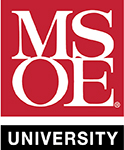Gallium maltolate inhibits human cutaneous T-cell lymphoma tumor development in mice. J Invest Dermatol 2015 Mar;135(3):877-884
Date
11/06/2014Pubmed ID
25371972DOI
10.1038/jid.2014.476Scopus ID
2-s2.0-84922673479 (requires institutional sign-in at Scopus site) 20 CitationsAbstract
Cutaneous T-cell lymphomas (CTCLs) represent a heterogeneous group of non-Hodgkin's lymphoma characterized by an accumulation of malignant CD4 T cells in the skin. The group IIIa metal salt, gallium nitrate, is known to have antineoplastic activity against B-cell lymphoma in humans, but its activity in CTCLs has not been elaborated in detail. Herein, we examined the antineoplastic efficacy of a gallium compound, gallium maltolate (GaM), in vitro and in vivo with murine models of CTCLs. GaM inhibited cell growth and induced apoptosis of cultured CTCL cells. In human CTCL xenograft models, peritumoral injection of GaM limited the growth of CTCL cells, shown by fewer tumor formations, smaller tumor sizes, and decreased neovascularization in tumor microenvironment. To identify key signaling pathways that have a role in GaM-mediated reduction of tumor growth, we analyzed inflammatory cytokines, as well as signal transduction pathways in CTCL cells treated by GaM. IFN-γ-induced chemokines and IL-13 were found to be notably increased in GaM-treated CTCL cells. However, immunosuppressive cytokines, such as IL-10, were decreased with GaM treatment. Interestingly, both oxidative stress and p53 pathways were involved in GaM-induced cytotoxicity. These results warrant further investigation of GaM as a therapeutic agent for CTCLs.
Author List
Wu X, Wang TW, Lessmann GM, Saleh J, Liu X, Chitambar CR, Hwang STMESH terms used to index this publication - Major topics in bold
AnimalsApoptosis
Carcinogenesis
Cell Line, Tumor
Cytokines
Disease Models, Animal
Female
Heterografts
Humans
In Vitro Techniques
Lymphoma, T-Cell, Cutaneous
Mice
Organometallic Compounds
Pyrones
Skin Neoplasms
Tumor Suppressor Protein p53
Xenograft Model Antitumor Assays









